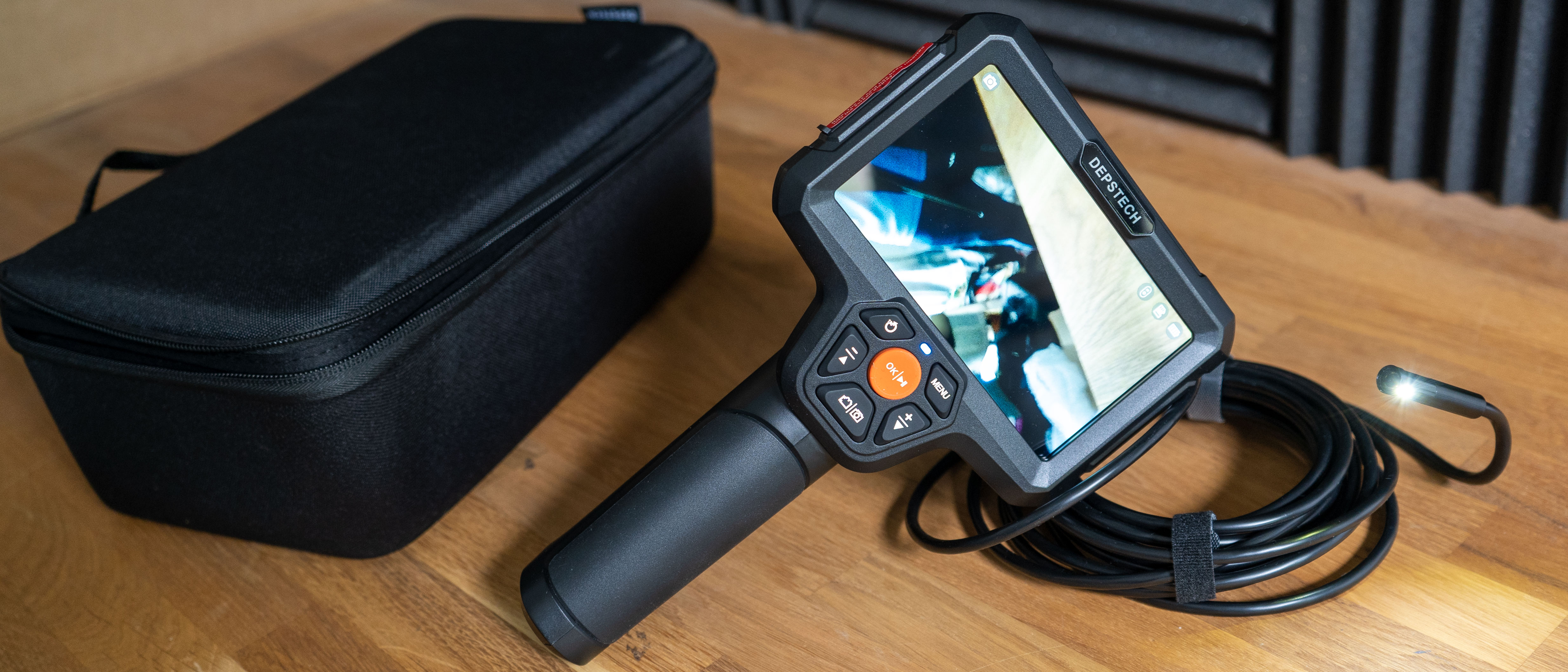Digital Camera World Verdict
While the DS500 is a deeper dip into the pocket than strictly necessary for occasional tasks, it also takes inspection in its stride in a way other solutions just don’t. The solidly built handset, not to mention the all-important probe’s dual-lens camera, all backed up with the ability to record mean you’ll not need to replace this tool for a long while. As a bonus the accessories are great and the built-in torch is genuinely useful (and has a super-cool trigger switch).
Pros
- +
Rugged but not over-heavy body
- +
Records stills or video to TF card
- +
5-inch screen
- +
Up to 7 hours on one charge
- +
Excellent picture and focus range
- +
Case and accessories included
Cons
- -
Screen isn't very rugged
- -
Camera switching could be better
- -
Not especially compact
- -
Only 3 brightness levels for probe
Why you can trust Digital Camera World
An endoscope can help to accelerating many DIY and professional tasks, and in many cases save time and money by circumventing the removal of floorboards or, for automotive enthusiasts, the lifting out of half an engine just to get a closer look at a concealed component. Aside from medical, there are three broad categories of endoscope (or ‘inspection camera’ if you prefer): USB and wireless – both of which borrow a phone screen – and all-in-one video devices like the Depstech DS500.
Depstech caters for all these categories, and also offer a variety of different camera probes for the end of the semi-rigid flex; the DS500 includes a dual camera design, which not only features a forward-pointing camera, but a second looking out to one side (yet it manages this with a slightly narrower probe than the wireless WF028).
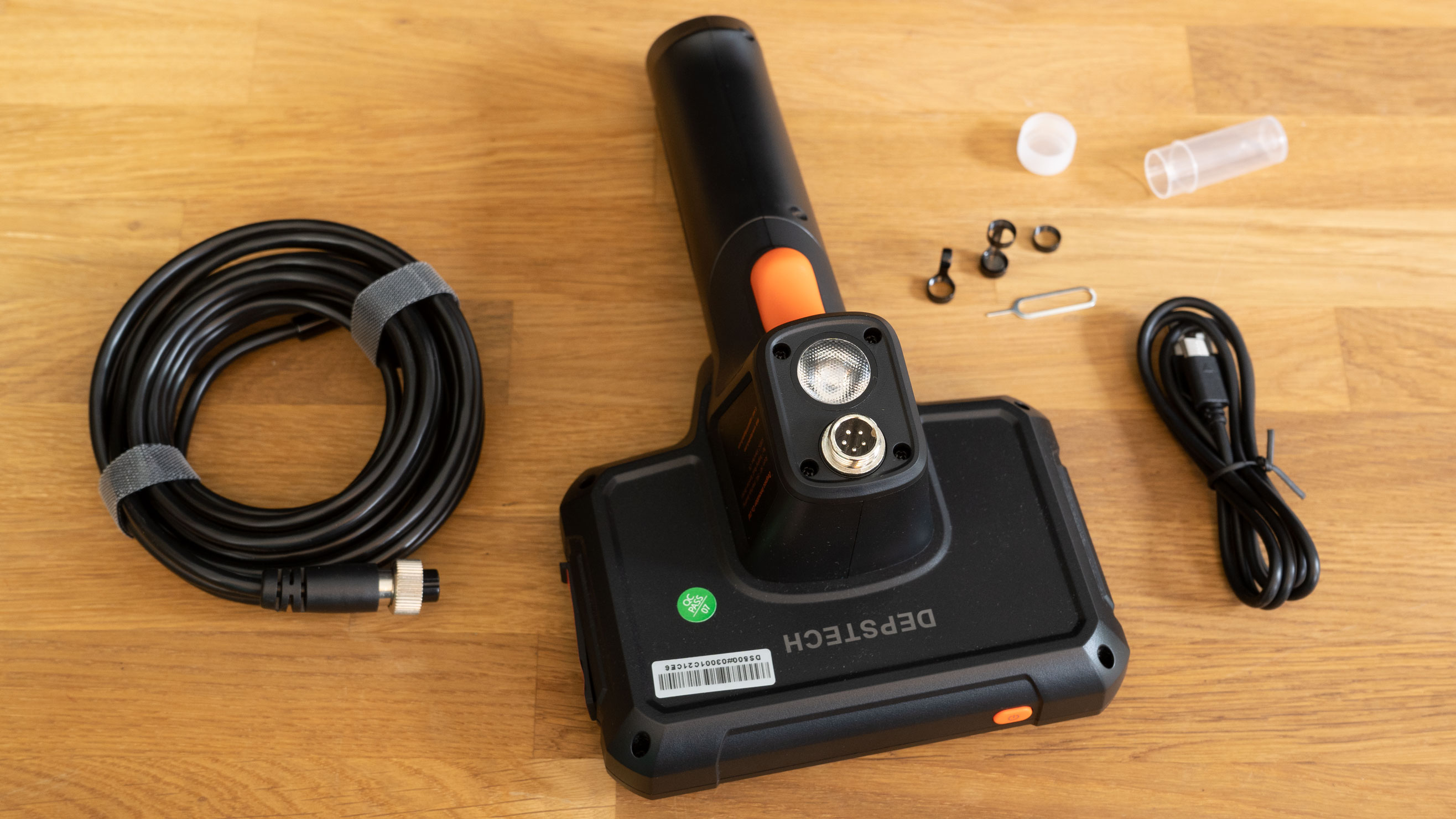
Depstech DS500 specifications
Resolution: 1920 x 1088 pixels
Probe diameter: 7.9mm (0.31in)
Cable length: 5m (16.5ft)
Focus range: 41 – 5000mm (1.6-198in)
Ingress Protection: IP67 (camera only)
Field of view: 178˚
Charging port: USB-C
Accessories: Hook, Magnetic catch, Hard Case
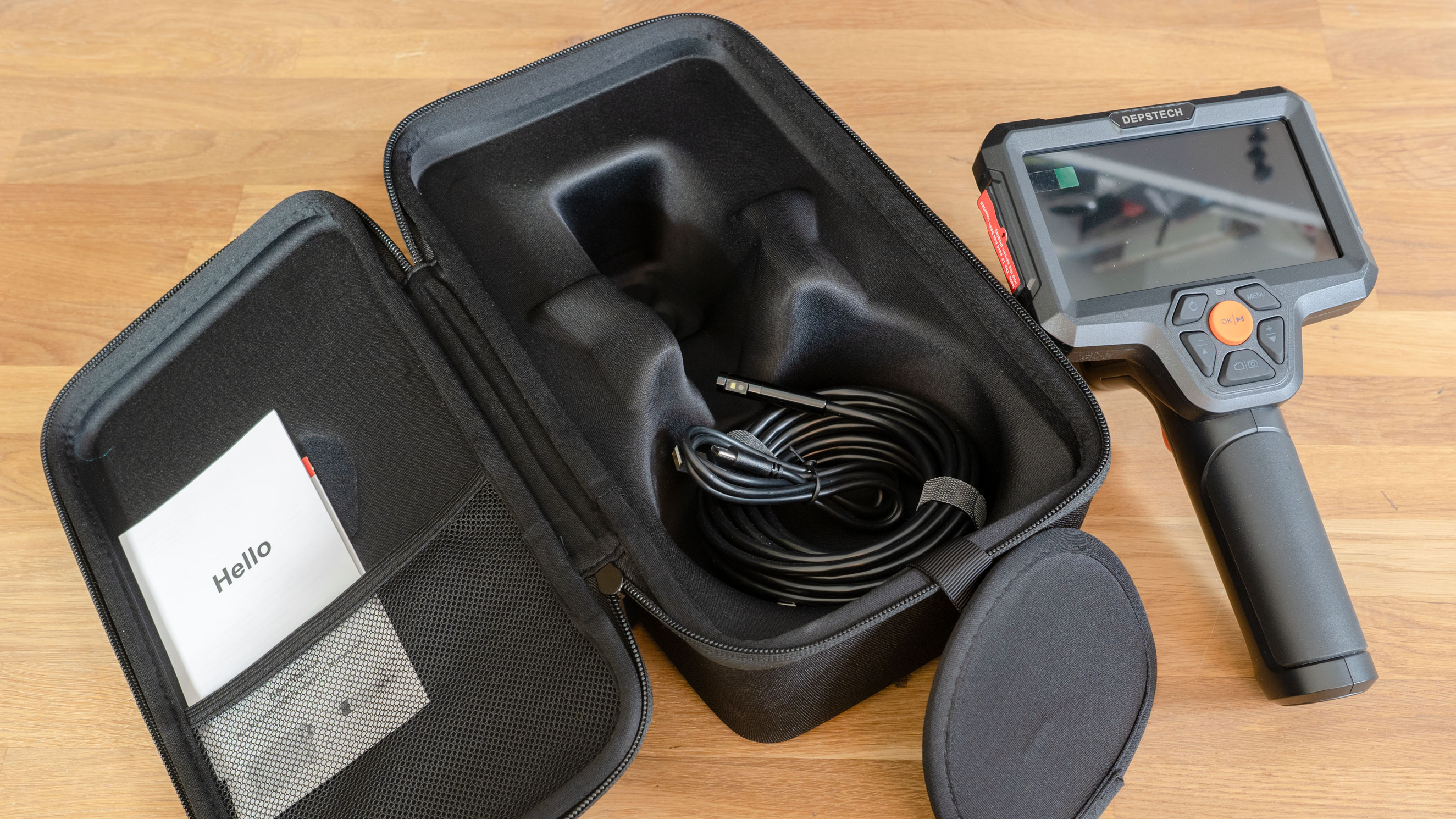
Depstech DS500 features
The DS500 is a solidly built inspection camera built around its 5-inch IPS screen, presumably a component which might find its way into a cellular phone, although it is not a touch screen; all operation is via the six buttons beneath (and power button at the top). Key operations include switching between the two cameras on the probe, both which can return a 1080P signal, rotating the image by 180˚, and choosing from the three brightness settings for the lights built into the probe. The main body also has a handy built in LED flashlight operated by a firm trigger-like switch.
The system houses a 5000 mAh battery, charged via a USB-C connector, which provides a generous seven hours of power for the screen and removable probe cable. For those who want to capture what they see, the device can capture video and pictures to a TF (microSD) card.
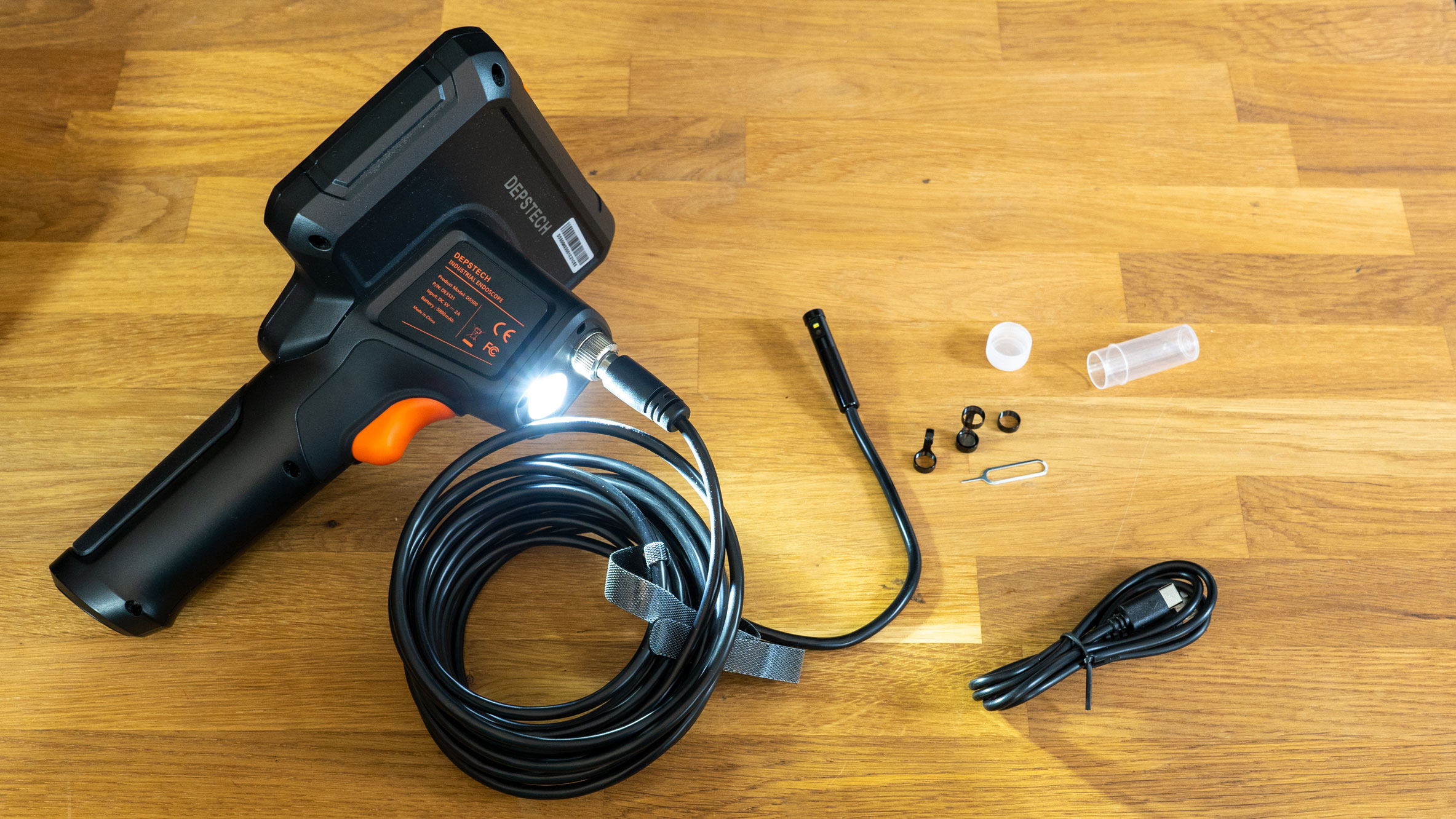
Depstech DS500 build and handling
The DS500 makes a good first impression, not least because it arrives in a good quality zipped hard case. Open it up and you’ll find the main unit opposite a welcome guide and, underneath a padded flap, the flex and accessories. Attaching the camera cable is via a screwed 5-pin socket on the back, while a 32GB TF card is already in the socket next to the charging port (though both, and a recessed reset button, are safely hidden beneath a rubber seal). The weight is a reassuring 438g (about a pound), rising to 622g with the flex attached; in no way too heavy to use and the plastic feels firm if not luxurious.
Pressing the backlit rubber buttons requires a firm press; and a menu can be invoked which is operated using the same keys which control the probe brightness in normal operation. Once you’ve set a language and date-and-time here for your recording’s metadata there isn’t a lot more to do.
Operating the probe is much the same as other endoscopes in terms of pushing the semi-rigid flex down a hole, with the exception that a long-press of the image rotation button (top left of the cluster) switches lenses. The side lens has only one LED to illuminate its view.
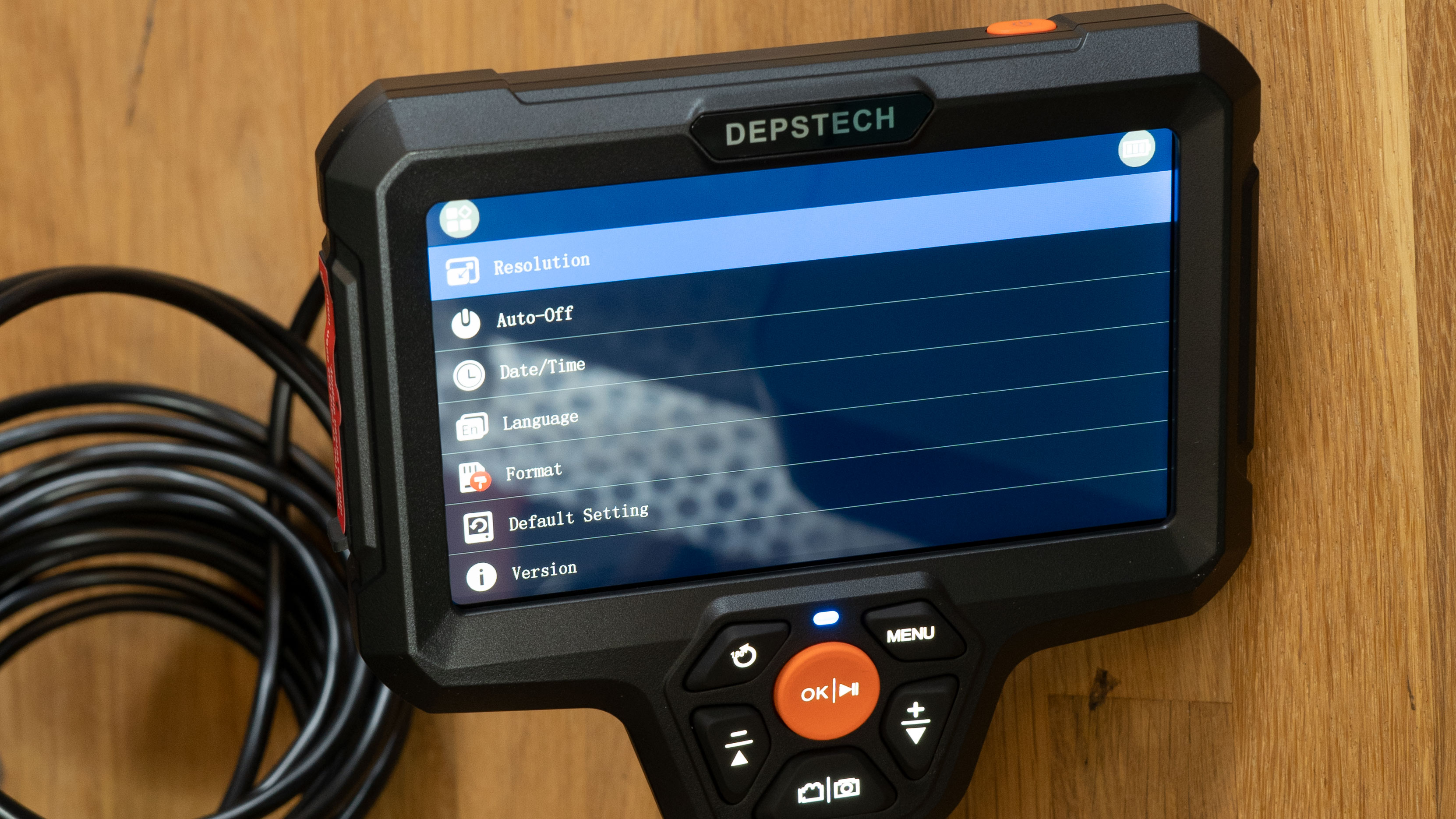
Depstech DS500 performance
The device powers up quickly, with only a brief flash of the ‘Depstech’ logo before you’re looking through the camera and able to work. General operation is easier to manage than some, and the menu isn’t challenging either. Image quality is good, especially from the front camera, though we’d argue that despite Desptech’s claim, the image isn’t sharp much beyond a meter (3ft) – but that’s still far better than most. There is, of course, noise and grain, especially in the darker areas, but nothing to complain about.
That said, the system isn’t without its quirks. The saved video is 720p at 25.34fps – more than fast enough to review but not the 30fps many would expect. Photos are saved at 1920 x 1088 pixels (assuming you choose the higher resolution), which is as much resolution as you need in the points of sharpest focus and illumination (inevitably the light is brighter near the probe).
While it was useful that an icon appears indicating when you’ve selected the side camera, we did find it a little odd that there was no choice of brightness.
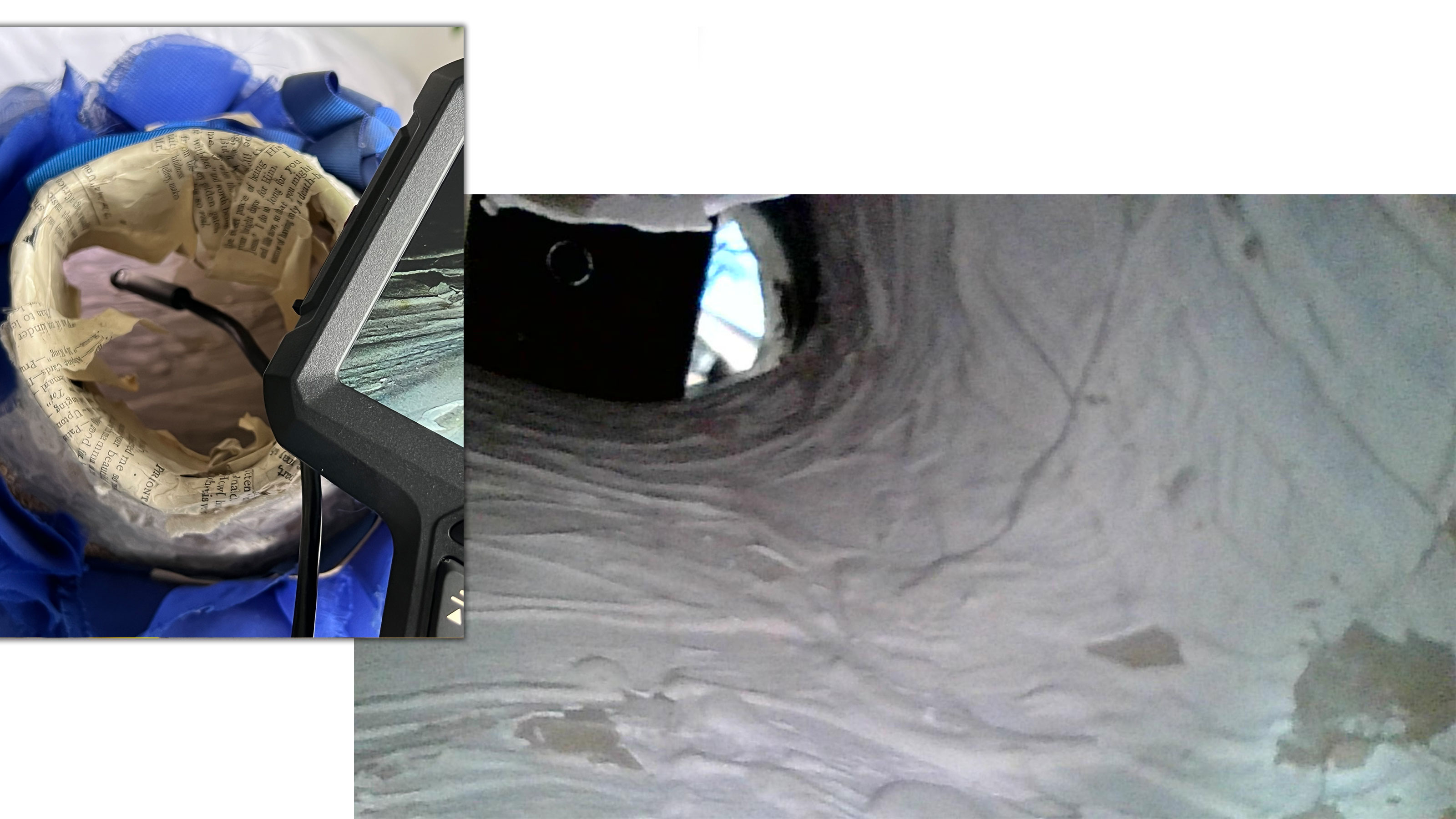
This is a sample of video from the Depstech DS500. In the clip you can see a few changes of brightness
Depstech DS500 verdict
The DS500 is a fine tool, more than capable of performing its duties even in a rough and tumble environment. The build is confidence inspiring, always appreciated in the kind of environment where serious work is being done, and we really appreciated the case and addition of magnet as well as standard hook – you’ll never lose a screw again.
Our main complaint is that the 180˚ image rotation and camera swap functions are performed by the same button, the latter requiring a long (3 sec) press; these are both core functions and it’s a real shame it isn’t easier to swap lenses. We’d also like to see a choice of frame rates for the video, but this is not a device meant to compete in the cinema so it’s not essential.
Since neither complaint really prevents the tool from performing its duties, we have no problem recommending the DS500 as an addition to any serious pro or enthusiast’s tool shelf.
Read more:
Best borescopes
Best thermal-imaging cameras
Best laser levels

With over 20 years of expertise as a tech journalist, Adam brings a wealth of knowledge across a vast number of product categories, including timelapse cameras, home security cameras, NVR cameras, photography books, webcams, 3D printers and 3D scanners, borescopes, radar detectors… and, above all, drones.
Adam is our resident expert on all aspects of camera drones and drone photography, from buying guides on the best choices for aerial photographers of all ability levels to the latest rules and regulations on piloting drones.
He is the author of a number of books including The Complete Guide to Drones, The Smart Smart Home Handbook, 101 Tips for DSLR Video and The Drone Pilot's Handbook.
